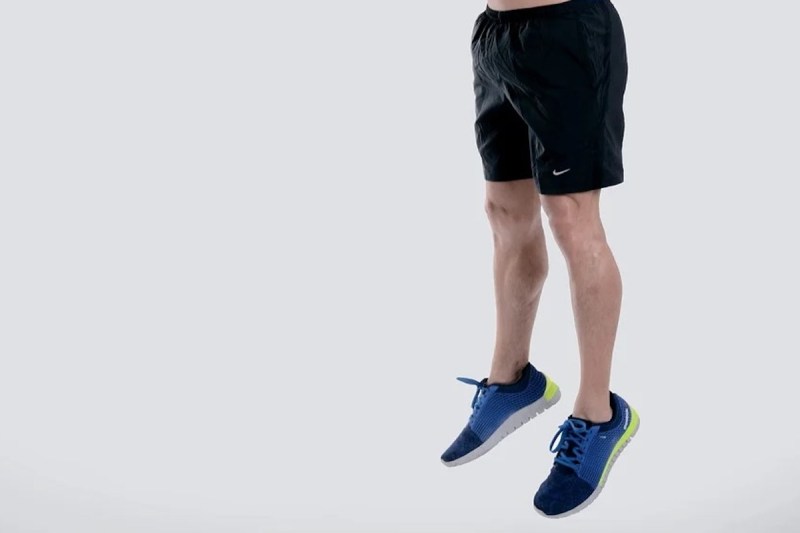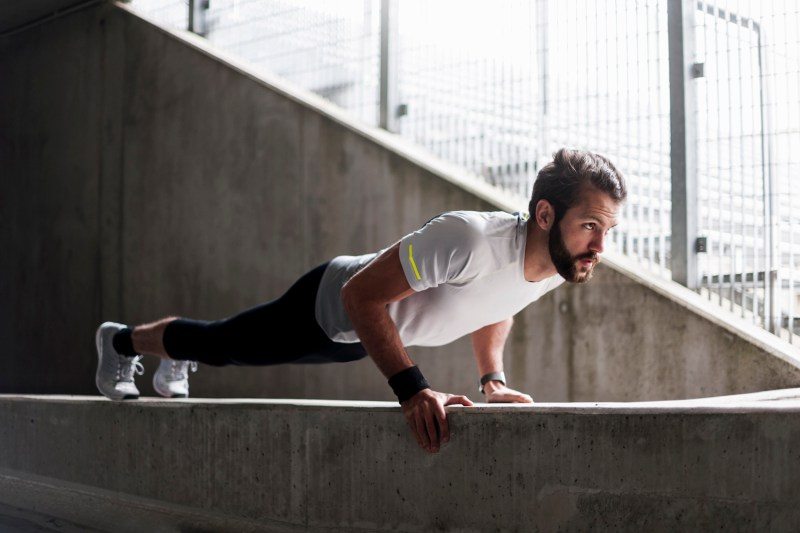
Most of us have fallen into a rather repetitive workout routine. You may be a runner, a spin class enthusiast, a weight lifter, or perhaps a fan of low-impact exercises. While you should certainly do what you love, it is important to switch up your routine every once in a while to maximize your results. This is where plyometrics can come in.
Plyometric training is one of the most frequently overlooked forms of exercise. It involves jumping, bounding, and other forms of rapid force production. Oftentimes, recreational athletes and guys just looking to work out enough to stay relatively fit decide that plyometric exercises are mainly beneficial for serious power athletes, but plyometrics are beneficial for nearly everyone.
No matter how fit you are (or aren’t!) or what sport of choice you focus on, there are valuable benefits of plyometrics. Adding just a few plyometric exercises into your weekly workout routine can advance your fitness with little time invested. Don’t preemptively count yourself out; keep reading to learn about the benefits of plyometrics and why you — yes, you — should also start jumping, bounding, and skipping your way to better fitness.

What are the benefits of plyometrics?
Plyometrics are high-impact, explosive exercises — think box jumps, burpees, and vigorous skipping. They challenge your muscles, bones, and connective tissues along with your neuromuscular and cardiovascular systems. The benefits of plyometrics include the following:
1. Plyometrics get your heart rate up
We often think that cardio exercises like running, rowing, swimming, and elliptical trainers are the only way to improve your cardiovascular fitness. Still, resistance exercises like squats and jumping exercises like plyometrics are also effective means to boost your cardiovascular health. You’ll quickly get your heart up and feel your lungs burning after a tough set of box jumps or depth jumps. Strengthening your heart and lungs is a great way to reduce your risk of heart disease, stroke, and high blood pressure.
2. Plyometrics burn calories
Plyometrics can help you achieve your weight loss goals because they are metabolically demanding. Most plyometrics exercises are total-body moves, which means you’ll be torching a significant number of calories in a short period of time since nearly every major muscle is recruited at once. They also get your heart rate up, so you’ll continue to burn calories once you’re done (called excess post-exercise oxygen consumption), enjoying the benefits of a revved metabolism.

3. Plyometrics strengthen bones and joints
The high-impact nature of plyometrics makes such exercises an excellent way to increase bone density and strengthen connective tissues like tendons and ligaments. Your musculoskeletal structures have to absorb the impact of landing, and this stimulates the body to develop more structural support. In this way, a consistent plyometrics routine can make your body more resilient so that you are less likely to get injured.
4. Plyometrics increase muscular strength
Simply put, plyometrics make you stronger. They train your muscles to develop more force because they harness the power of the point in the muscle stretch cycle where maximum contractile force can be produced. Essentially, with plyometrics, you rapidly move between eccentrically contracting (lengthening) a muscle and concentrically contracting (shortening) it. This helps develop more force and trains your neuromuscular system to recruit muscle fibers more rapidly.

5. Plyometrics improve your athletic performance
Whether you’re a marathoner, a tennis player, or a hiker, a plyometrics routine can improve your athletic performance. Plyometric training helps you jump higher, run faster, lift heavier, and develop more power because it trains your anaerobic system, increases your cardiovascular fitness, and builds your strength more efficiently than bodyweight exercises.
6. Plyometrics are efficient
Plyometrics are perfect for HIIT workouts. As high-intensity exercises, they help you torch calories and gain impressive fitness benefits in far less time than moderate-intensity exercise. HIIT workouts incorporating plyometric exercises can accomplish equivalent workout results as an aerobic endurance workout in one-third to one-half the time — music to the ears of anyone who’s over-scheduled.
7. Plyometrics improve coordination
Most plyometric exercises are repetitive and involve simultaneous movements of the upper body and legs. In this way, plyometrics train the neuromuscular system to integrate movement patterns, which improves coordination and balance.

8. Plyometrics can be done anywhere
Although some plyometrics require equipment, many can be done with just your body weight. Jump squats, burpees, bounding drills, and clapping push-ups are all examples of functional plyometric exercises that get your heart pounding and muscles working with just your body weight — no gym required!
9. Plyometrics can suit any fitness level
The difficulty and intensity of plyometrics can be modified to meet the needs of nearly any athlete, regardless of where you are on the fitness continuum. For example, a young, fit, healthy athlete may be able to take on weighted box jumps. In contrast, an older, frailer individual could try gentle skipping or even vigorous marching in place, both of which qualify as plyometrics.

Plyometrics exercises to include in your routine
Now that we have established all the reasons why you should do plyometrics workouts, let’s quickly dive into what plyometric exercises you can use.
Group together any of the following exercises to make an impactful workout:
- Pushups
- Alternating jumping lunges
- Box jumps
- Tuck jumps
- Jump rope
- Lunges
- Burpees
- Lateral bounds
- Mountain climbers

Tips if you’re starting a new plyometrics workout routine
If you’re new to plyometrics, it’s important to start slowly and gradually increase the intensity and duration of your workout. You also must listen to your body and stop if you experience any pain or discomfort. Here are some tips for getting started with plyometrics workouts:
- Start with a warm-up to prepare your body for the new exercise.
- Use proper form to avoid injury.
- Focus on speed and intensity.
Plyometrics can be a great way to improve your overall athleticism and reduce your risk of injury by training your muscles to absorb and dissipate force more effectively.



